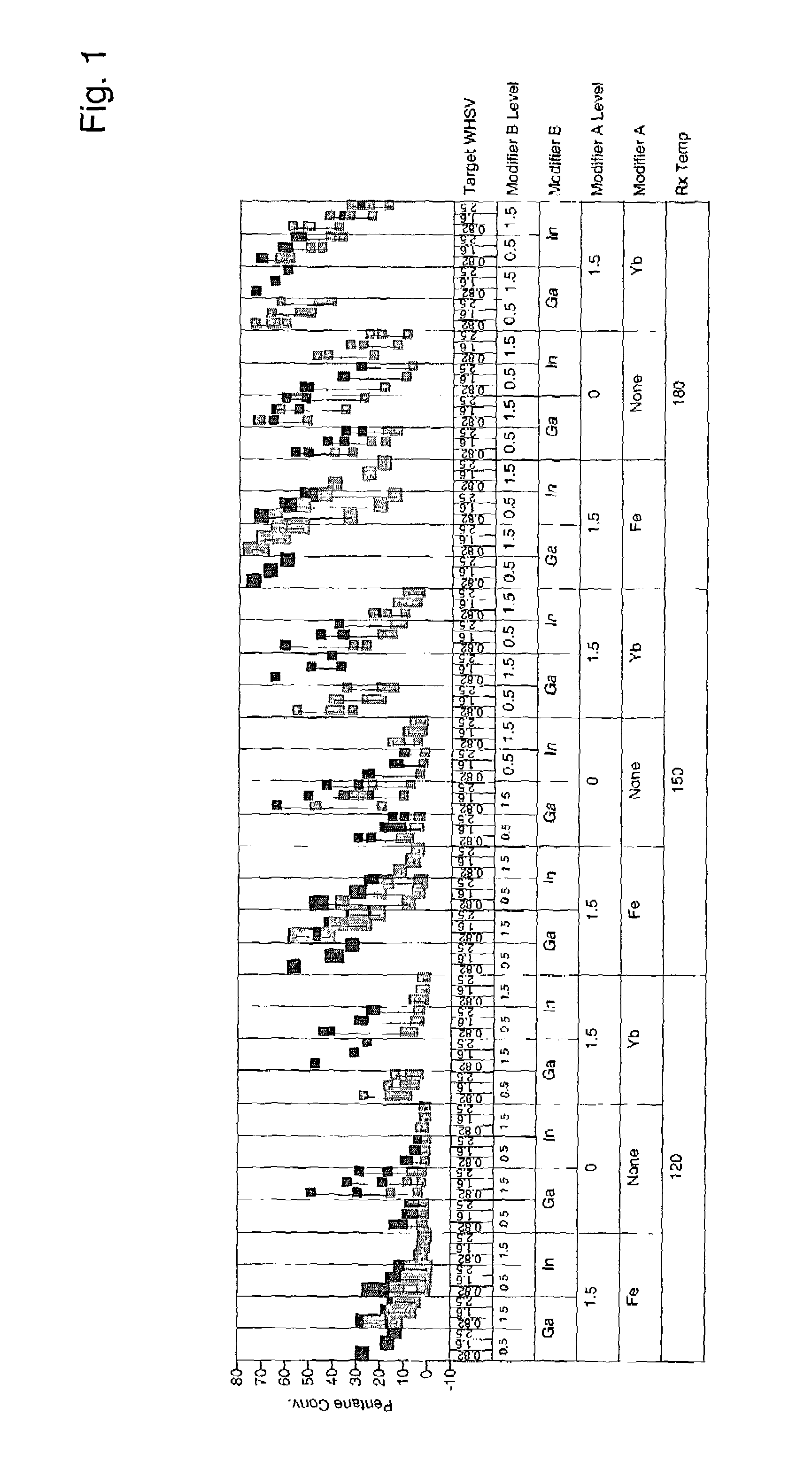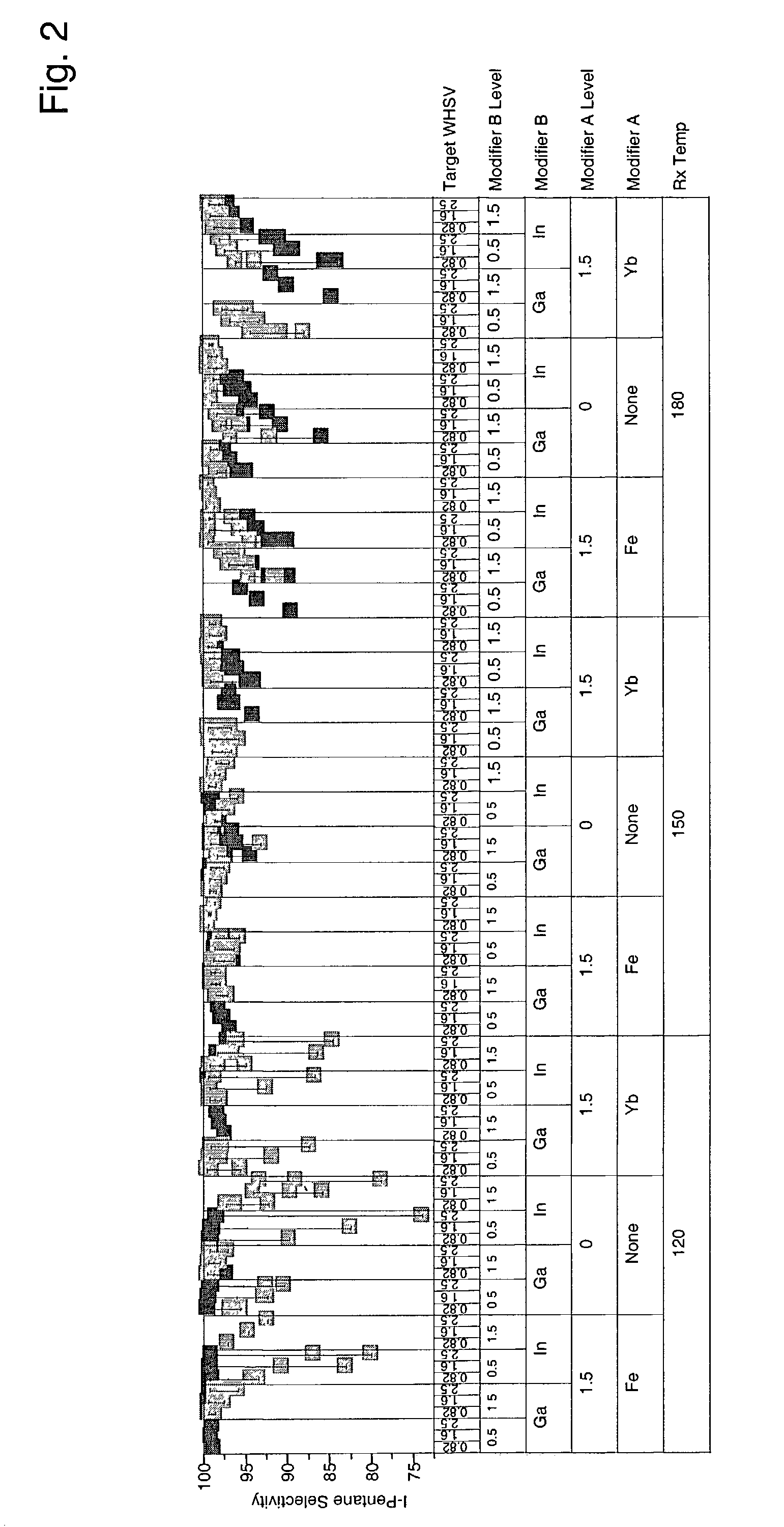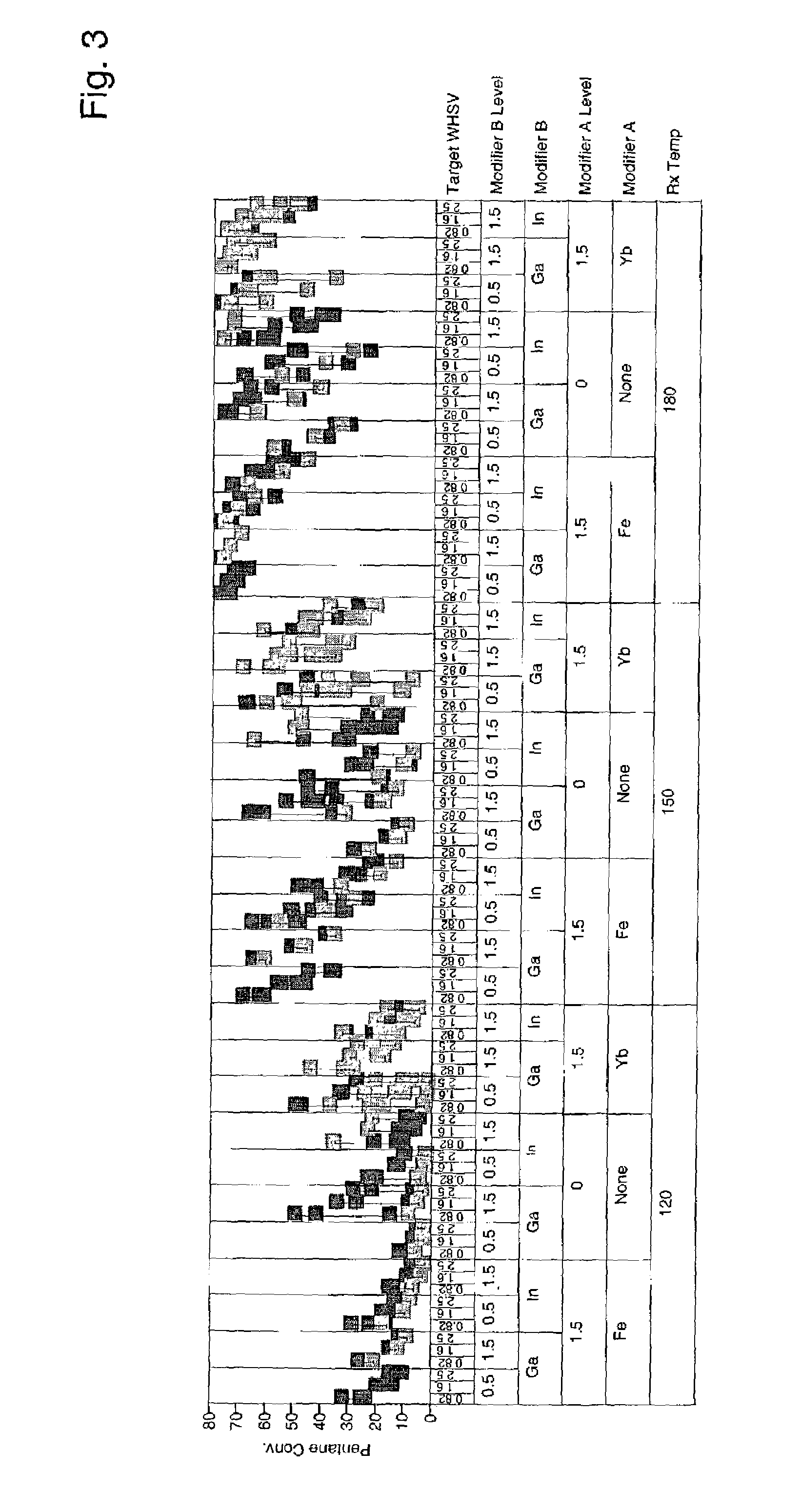Solid-acid isomerization catalyst and process
a solid-acid isomerization and catalyst technology, applied in the direction of hydrocarbon preparation catalysts, metal/metal-oxide/metal-hydroxide catalysts, chemical/physical processes, etc., can solve the problems of unfavorable reduction of platinum-group metal, patent disclosure of additional metal components of catalysts, and reduce the efficiency of refiners with processing problems, so as to improve catalyst and process, improve the isomerization performance and stability, and improve the effect of catalys
- Summary
- Abstract
- Description
- Claims
- Application Information
AI Technical Summary
Benefits of technology
Problems solved by technology
Method used
Image
Examples
example 1
[0040]Catalyst samples of Table 1 were prepared starting with zirconium hydroxide that had been prepared by precipitating zirconyl nitrate with ammonium hydroxide at 65° C. The zirconium hydroxide was dried at 120° C., ground to 40–60 mesh. Multiple discrete portions of the zirconium hydroxide were prepared. Solutions of either ammonium sulfate or a metal salt (component 1) were prepared and added to the portions of zirconium hydroxide. The materials were agitated briefly and then dried with 80–100° C. air while rotating. The impregnated samples were then dried in a muffle oven at 150° C. for two hours under air. Optionally, solutions of either ammonium sulfate or a metal salt (component 2, where component 2 is not the same as component 1) were prepared and added to the dried materials. The samples were briefly agitated and dried while rotating. The samples were then calcined at 600–700° C. for 5 hours. The final impregnation solutions of chloroplatinic acid were prepared and added ...
example 2
[0042]Catalysts were prepared as described in Example 1 containing 0.5 and 1.5 wt. % modifier, 0.25 wt. % and 0.75 wt % platinum, and 7 wt. % sulfate. More catalysts were prepared as above, but additionally comprising 1.5 wt. % iron or ytterbium. Approximately 95 mg of each sample was loaded into a multi-unit reactor assay. The catalysts were pretreated in air at 450° C. for 2–6 hours and reduced at 200° C. in H2 for 0.5–2 hours. 8 wt. % pentane in hydrogen was then passed over the samples at 120° C., 150° C., and 180° C. approximately 1 atm, and 0.82, 1.6, and 2.5 hr−1 WHSV (based on pentane only). The products were analyzed using online gas chromatographs and the results are shown in FIGS. 1–4. FIG. 1 is a plot of percent pentane conversion observed for each of the catalysts having 0.25 wt-% platinum at the different reaction temperatures and weight hourly space velocities. FIG. 2 is a plot of the isopentane selectivity observed for each of the catalysts having 0.25 wt.-% platinum...
PUM
| Property | Measurement | Unit |
|---|---|---|
| pressure | aaaaa | aaaaa |
| temperature | aaaaa | aaaaa |
| pressure | aaaaa | aaaaa |
Abstract
Description
Claims
Application Information
 Login to View More
Login to View More - R&D
- Intellectual Property
- Life Sciences
- Materials
- Tech Scout
- Unparalleled Data Quality
- Higher Quality Content
- 60% Fewer Hallucinations
Browse by: Latest US Patents, China's latest patents, Technical Efficacy Thesaurus, Application Domain, Technology Topic, Popular Technical Reports.
© 2025 PatSnap. All rights reserved.Legal|Privacy policy|Modern Slavery Act Transparency Statement|Sitemap|About US| Contact US: help@patsnap.com



